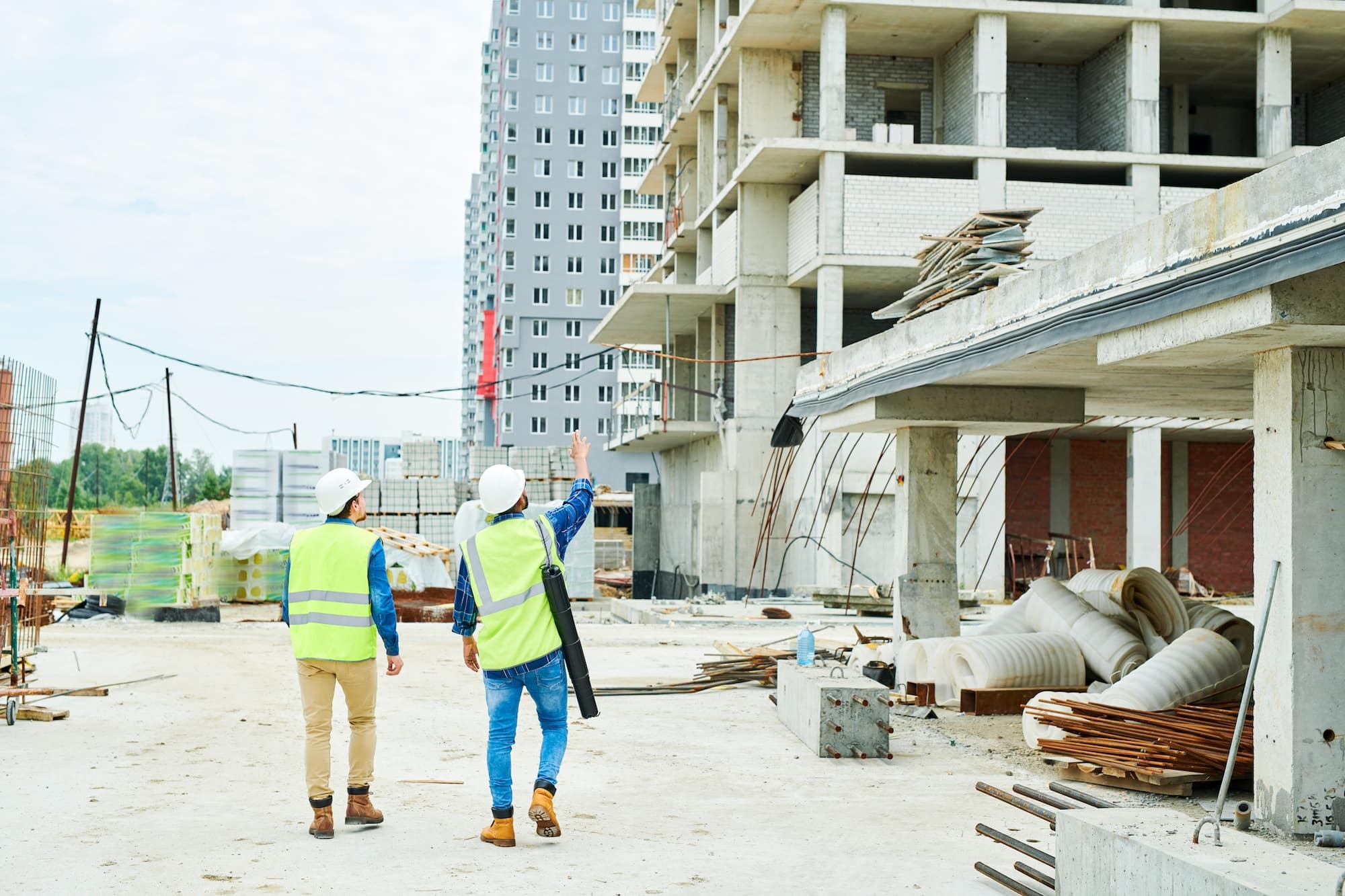Winter may be a slower time for construction projects, but that doesn’t mean the work stops. Construction crews carry on with projects through the cold season to meet contractual obligations, support market demands, and for cost reasons, among other factors.
Just as extreme temperatures can be problematic on construction sites in the summer, the same sentiment rings true during wintertime. When construction sites are subject to extreme cold, it raises concerns for frozen pipes as well as workers’ safety. With all that’s on the line, construction companies need to have a way to get in front of these issues before their impact is felt.
The Damage Frozen Pipes Can Cause
Consider a project where a healthcare clinic remains open while its exterior is upgraded from brick to metal paneling. Amid this process, the removal of the brick exposes plenum space. The pipes’ exposure to the elements increases the likelihood that water lines and sprinkler system lines will freeze.
When this happens, the costs are significant. It’s estimated that one inch of water can result in $25,000 worth of damage. On the job site, this damage can extend from the structure to project materials and equipment. While this is one way that frozen pipes inflate project costs, they also lead to project delays that rack up more labor costs and potentially contractual penalties.
There are some manual measures that can be taken to prevent frozen pipes. Construction crews can use insulating blankets to seal off project areas, include heaters on-site, or wrap insulation around the exposed pipes themselves. But there’s always the chance that high winds cause insulation to come loose or a mechanical issue can cause a heater to stop working.
The Safety Risks for Your Workforce
Out of 1,300 hypothermia-related deaths reported in the span of a year, almost one in three were linked to occupational activities. Construction was highlighted as one of the outdoor occupations at greatest risk.
To keep workers safe, OSHA advises that non-emergency construction work should halt when air temperatures drop to -34℉ or lower and wind speeds reach 10 MPH or higher. They also recommend scheduling heavy construction work during the warmest part of a winter day.
Sometimes the numbers in a weather forecast don’t always paint the whole picture. If humidity levels are low, for instance, sweat can evaporate faster and put workers at greater risk of cold stress. At the same time, temperatures can unexpectedly drop below safe levels during the work day and lead to new potential hazards.
Enable 24/7 Temperature & Humidity Monitoring of Your Job Site
Whereas manual measures support safety on winter construction job sites, technology ensures it. A 24/7 temperature and humidity monitoring system that immediately notifies you of temperature and humidity issues acts as a critical safety net. If temperature or humidity levels reach a predefined threshold, you’ll receive a real-time alert so you can take precautionary measures to keep your job site and workers safe.
As the vice president of operations at Marcus Construction — a Minnesota-based provider of design-build services for commercial, industrial, and agricultural markets — Taylor Marcus knows the importance of monitoring temperatures on winter job sites, but also the inconvenience and stress of doing it manually.
“There was an unknown when you weren’t on the job site,” Marcus said. “You didn’t know what the temperature was or if a heater failed or ran out of gas.”
With a temperature and humidity monitoring system, Marcus enjoys full monitoring coverage and confidence.
“Instead of just knowing that it was getting colder in the construction site, we knew where a failure might be before we even arrived on-site.”
Ready for Cold Temperatures — and Beyond
While an investment in a monitoring system prepares construction sites for the winter, its importance extends well into the rest of the year — specifically, the summer months.
Consider these scenarios:
- Excessive air moisture can prevent coating from curing correctly, resulting in material damage and increasing the risk of mold
- If humidity is too high, wood can warp, causing permanent damage to wood floor boards, wood cabinets, millwork, and more
- Exposure to extreme heat can cause symptoms of heat exhaustion and heat stroke
With a temperature and humidity monitoring system like CORIS in place, you can prevent these heat-related issues before they have a chance to impact your site or your workers. It’s a year-round safety net that modern construction companies shouldn’t be without.





